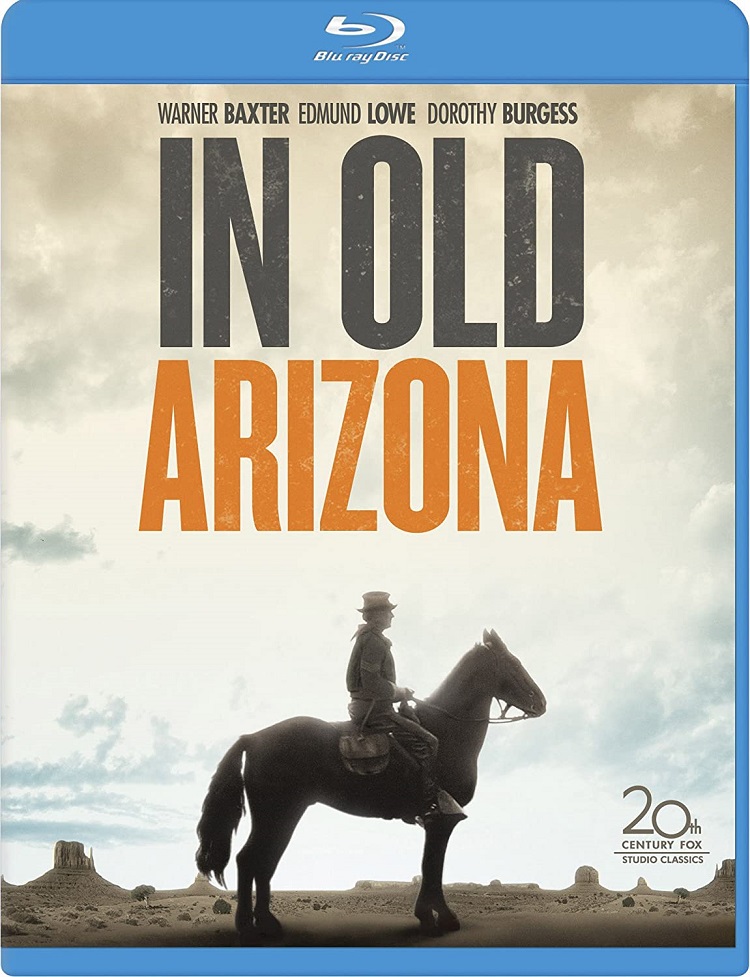
When Star Wars: Episode I – The Phantom Menace first started teasing moviegoers and nerds everywhere in the late 1990s, the world became accustomed to the phrase “Every Saga Has a Beginning” – something that has been copied and parodied in some circles ever since. Of course, it’s a true statement; one that extends as far back as the early days of moving picture entertainment itself. Witness the 1928 Academy Award winning Hollywood classic In Old Arizona, wherein we see the beginning of three entirely different (but altogether) factions of film: the singing cowboy motif, the first all-sound entry filmed entirely in the great outdoors, and – last, but not least – the god-awful so-painful-I-beg-you-to-shoot-me-before-it-ends style of just plain bad cinema.
Why bad? Well, let’s just say Hollywood hadn’t quite found its instrument in late ’28 when this one was shot. This was when stage actors still attempted to act in front of an audience whilst in front of a camera – a method that is rarely used today except by those contemptible performers who hail from the truly lowest depths of acting hell. Additionally, In Old Arizona – which was, amazing enough, adapted from O. Henry’s The Caballero’s Way – sports several performances that are strictly loathsome by today’s standards, with two of its three billed entertainers in particular scraping the very bottom of the racial stereotype barrel in order to give their roles that extra bit of “Oh, dear God, no!”
One only need witness top-billed star Warner Baxter chewing his way through every living piece of scenery (not an easy feat) as The Cisco Kid – a Mexican bandito with a sympathetic streak in his blood – to see it for his or herself. The ante is upped as Dorothy Burgess struts through her onscreen moments as a hotheaded Mexican lass who is our anti-hero’s girlfriend. Together, these two terrorize our eyes and ears by bringing every Latin stereotype to life on the screen, complete with over-accessorized accents (a minor role by Sicilian-born Henry Armatta as an Italian barber also succeeds in offending everyone in the room). Meanwhile, Californian-born Edmund Lowe – a bizarre early 20th Century mixture of John Wayne and Stephen Fry – wanders in and out of scenes as a Calvary officer sent to apprehend the notorious foreign bandit, occasionally remembering that he is supposed to have a Brooklyn accent.
Throughout the entire span of In Old Arizona, our three leads run into each other, grin a lot, and cause a lot of cringing in-general. There’s a story in there, too, if I’m not mistaken, but it’s misplaced between all the noise those newfangled and overly-sensitive microphone things were picking up (yes, you will hear actual bacon being fried – along with every spec of static and white noise within a fifty-mile radius!). Essentially, that’s it. Plus, this was before technicians had mastered the art of off-screen musical accompaniment without an actual orchestra on the set, so there are a lot of long, awkward moments of silence. Granted, I’m taking into consideration that nobody really knew what the heck they were doing as yet in the grand scheme of things, but it genuinely doesn’t make In Old Arizona any better in the long run.
Keep in mind that this so-called classic won an Academy Award for Best Actor (which went to Warner Baxter, sadly, and not his horse) and was nominated for four more. But then, 1941’s mundane Poverty Row quickie offering King of the Zombies was nominated for an Academy Award, too. As a matter of fact, so was Star Wars: Episode I – The Phantom Menace, which lost out to The Matrix. I guess things haven’t changed too terribly much since then in some ways. But at least The Matrix flew by: In Old Arizona just seems to drag on and on.
To me, it was ninety-nine minutes that only seemed like hours. To purists, however, it might seem quite delightful. The age of the source material, on the other hand, might not appeal to you. While some of the flick looks rather nice in some spots, the general condition of this presentation (which is shown in its original 1.20:1 aspect ratio) is fair, with noticeable wear all-around. The DTS-HD MA 1.0 soundtrack has been unremastered in order to preserve its historical significance. What that means to most of you, though, is that you’ll be hard-pressed to enjoy its historical content on account of the primitive sound. More importantly, it means the soundtrack has more hissing going on here than that which you would hear at a free stand-up benefit show featuring the likes of Dane Cook, Carrot Top, Kathy Griffith, Margaret Cho, Larry the Cable Guy, Yakov Smirnoff, and Gallagher (and so on). There are no special features, though the fact this catalogue title has made its HD debut is pretty special item well on its own.
Best recommended for classic film students and any still-living grand/great-grand relatives you may have.